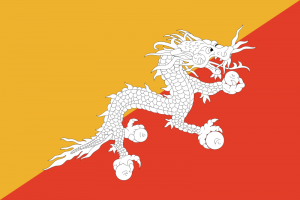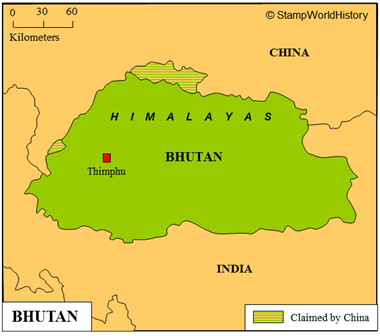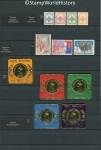འབྲུག་ཡུལ

Bhutan
Quick reference
General issues: Kingdom 1955-Present
Country name on general issues: Bhutan
Currency: 1 Rupee = 16 Annas 1955-1957, 1 Ngultrum = 100 Chetrum 1957-Present
Population: 691 000 in 1955, 753 000 in 2013
Political history Bhutan
Bhutan is located in the Himalayas in southern Asia. In the 19th century, Bhutan has a complex political system in which power is shared between worldly and religious leaders and between central and local leaders. At the end of the 19th and start of the 20th century, one of the leaders succeeds in consolidating the power in one person. Bhutan, in 1907, becomes a kingdom ruled by the dynasty that is still in power today. Until 2008, Bhutan is an absolute monarchy, all powers resting with the king. In 2008, Bhutan becomes a constitutional monarchy, the king still being head of state, but the executive, legislative and judiciary powers being transferred to separate institutions.
In the late 19th and early 20th century, British influence from neighboring British India gradually increases in Bhutan. In 1910, a treaty is signed through which Bhutan retains internal self government but is to be guided in foreign policy by the British. Bhutan thus becomes a de facto protectorate. When British India gains independence in 1947, the role of the British is taken over by India, a role confirmed in a 1949 treaty between India and Bhutan. The ties with India, however, gradually loosen and, in 1971, Bhutan becomes a full member of the United Nations. The 1949 treaty is adjusted accordingly in 2007, Bhutan thus becoming a fully independent state. One of the issues in Bhutan’s foreign policy is a dispute with China over the borders in the Himalayas.
Bhutan for a long time has been a country closed to foreigners who are allowed into he country only as of 1974. Television was introduced in 1999. Bhutan’s economy is less developed, depending largely on agriculture and forestry.
Postal history Bhutan
The first stamps used for postal purposes are revenue stamps used locally to frank domestic mail. These are not listed in all catalogs. A national post service is established in 1962 when Bhutan issues its first regular stamps. Bhutan is rather focused on the collectors market in its stamp issuing policy. Bhutan has issued some eccentric stamps such as stamps embossed on gold foil and even phonograph records to be used as stamps.
Album pages
← Previous page: BatumNext page: British Postal Agencies in Eastern Arabia →



